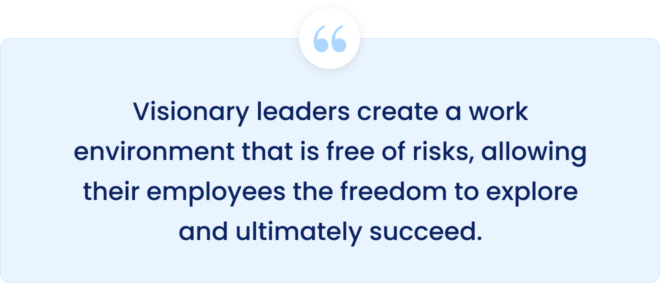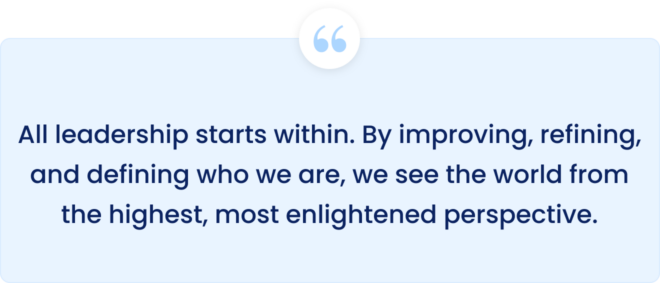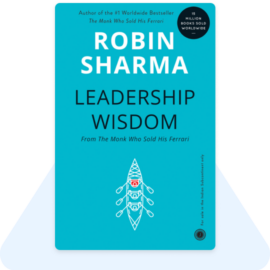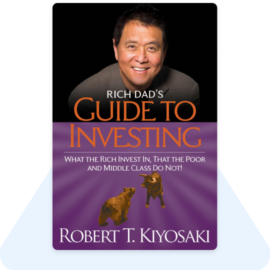Get ready to become a visionary leader with “The 8 Rituals of Visionary Leaders” by Robin Sharma. This interactive guide will challenge and inspire you to elevate your leadership game. Through engaging storytelling, thought-provoking exercises, and real-life examples, Sharma shares eight powerful rituals that can revolutionise your approach to leadership.
You’ll actively participate in self-reflection, goal-setting, and action planning to uncover your strengths and develop a personalized roadmap to becoming a visionary leader. Break free from limitations, create an innovative work environment, and achieve remarkable results. Join us on this transformative journey and unleash your full leadership potential. The time for change is now.
Introduction
The book “The 8 Rituals of Visionary Leaders” by Robin Sharma explores the principles of inspirational leadership and provides a blueprint for individuals to become effective leaders. Robin Sharma, a Canadian writer and former lawyer, self-published his first book, “Mega Living,” at the age of 25, focusing on stress management. Since then, he has written 12 more books, including the immensely popular “The Monk Who Sold His Ferrari,” which has been translated into 70 languages. Another notable work of his is “A Leader Has No Title.”
Building on the success of “The Monk Who Sold His Ferrari,” Robin Sharma delves into the realm of leadership with his latest book, “The 8 Rituals of Visionary Leaders.” This book explores the transformative leadership practices of an inspiring leader who managed to turn around the fortunes of an organisation through simple yet powerful rituals. One of the defining features of this book is the idea that anyone, regardless of their current position, can become a leader through intention and dedication.
Drawing from timeless success principles, Robin Sharma presents ways to significantly enhance the quality of our personal and professional lives. His aim is to help readers become visionary leaders and transform their businesses into thriving organisations that can adapt to a rapidly changing world. The book offers a practical blueprint for effective leadership, tapping into the highest human potential within those being led and fostering loyalty, commitment, and creativity.
Robin Sharma emphasizes that leadership is a craft that requires continuous refinement and improvement rather than being an innate gift. He shares his ideas in a simple yet profound manner, leaving a lasting positive impression on the reader. The story revolves around two main characters: Peter Franklin, the CEO of GlobalView Software Solutions, and Julian Mantle, a former associate who guides Peter out of a potential crisis. Julian, having undergone a life-altering journey of self-discovery in the Himalayas, brings invaluable insights to Peter’s leadership journey.
The author asserts that the principles in the book align well with the four subdimensions of transformational leadership: charisma, individualised consideration, inspirational motivation, and intellectual stimulation.
Now, let’s explore the 8 Rituals for Visionary Leaders as outlined in the book.
Ritual #1: The Ritual of a Compelling Future Focus
The core wisdom of this ritual lies in the notion that the ultimate responsibility of a visionary leader is to honour and uplift the lives of those they lead, enabling them to manifest their full potential through their work. A leader can inspire their team to wholeheartedly dedicate themselves to their tasks by linking those tasks to a purpose that resonates on an emotional level.
According to the author, “Purpose is the most powerful motivator in the world.” The leader should articulate the vision and mission of the organization in a way that reflects its purpose.
Moreover, the author highlights that a leader’s primary role is to instil excitement in their team about the significant impact their work has on the lives of others. To accomplish this, the author suggests adopting ritual actions that facilitate the fulfilment of this first ritual. It is crucial to infuse wisdom into our actions to ensure that our positive intentions yield tangible results.
Stephen Covey’s concept of exercising integrity in the moment of choice is emphasized. Communicating the compelling cause is vital to evoking emotions in team members. Aligning visualization with effective verbal communication allows employees to forge a strong connection with the cause.
By following these rituals, leaders can inspire and guide their teams towards a compelling future, foster growth, and drive meaningful change.
The author further emphasizes that a visionary leader dignifies and honors the lives of the people they lead by enabling them to reach their highest potential through their work.
Ritual #2: The Ritual of Human Relations
In this ritual, the author explains that visionary leaders prioritise the development of long-term tangible assets, such as strong relationships built on trust and respect, rather than focusing solely on short-term goals and maximising immediate profits.

The author highlights that visionary leaders understand the importance of investing time and allowing their employees to fully develop their potential. By doing so, they establish a robust system that ultimately leads to maximum profitability. A leader must establish a connection with their team by actively listening to both their spoken and unspoken words. Building trust is crucial, as it determines whether employees will go the extra mile to achieve the best results.
The author states, “One of the most important aspects of human hunger is the need to be cherished and understood.” This emphasises the significance of valuing and understanding individuals within the team.
The importance of keeping promises is emphasised, as the author asserts that breaking promises chips away at one’s character. By consistently doing the right thing and fulfilling promises, leaders build trust and maintain their integrity.
Active listening is also highlighted as an essential trait of visionary leaders. By deeply listening to their team members, leaders win their hearts and become excellent communicators. Empathy, recognition, and investment in the growth of individuals are crucial. Leaders should display excitement and passion for understanding and comprehending their team members. Asking open-ended questions and attentively listening to responses helps foster effective communication.
Consistent compassion is another characteristic of visionary leaders. By showing kindness and genuine concern for their team members, leaders demonstrate that they value and cherish them as individuals working towards a meaningful cause. In challenging situations, it takes great courage for a leader to do what is right.
The ritual of truth-telling is highlighted as well. Visionary leaders prioritise honesty and openness, earning the trust of their team members. To gain support and deep commitment to the future vision, leaders must foster transparent communication and gather key information.
Open lines of communication help leaders stay informed about ongoing tasks and make informed investments. When there is a culture of open discussion, team members develop a favorable opinion of their leader and are less likely to let them down. Additionally, open communication helps address minor issues before they escalate into major conflicts.
Ritual #3: The Ritual of Team Unity
As the saying goes, “Great leaders are great teachers and coaches.” The author explains that a good coach energises, challenges, develops, and equips their team members, just as a dedicated teacher is devoted to the growth and improvement of their students.
Similarly, a committed leader encourages, motivates, and supports their team members to achieve higher performance standards. A leader must recognize that everyone desires to work well and efficiently, but a lack of appreciation leads to stagnation and mediocrity among employees.
By adhering to these rituals, visionary leaders create an environment where strong relationships, trust, effective communication, and team unity thrive, leading to exceptional performance and growth.
The author emphasises the importance of identifying and recognising high-performing employees as a key motivator. By acknowledging and rewarding their achievements, not only do these individuals benefit, but their diligent efforts also inspire others to strive for excellence. Those capable of achieving outstanding results will have someone to emulate or a benchmark to aspire to.

Additionally, the author emphasizes the need to appreciate positive actions and highlights the significance of avoiding instilling fear of punishment for making mistakes. When offering praise, it is essential to be specific, immediate, public, and sincere.
“Visionary leaders create a work environment that is free of risks, allowing their employees the freedom to explore and ultimately succeed.”
As a leader, one should follow the principle of “Give a man a fish, and you feed him for a day. Teach a man to fish, and you feed him for a lifetime.” The work atmosphere should promote freedom and motivation for performance.
A study revealed that, out of 1500 employees, personalised and instant recognition was found to be the most effective way to energise staff. However, only 42% of employees received such feedback, and 58% rarely received acknowledgment for a job well done, despite expressing the desire for it.
Furthermore, the author discusses the basic principles of transactional leadership in contrast to transformational leadership. The purpose of this ritual is to unlock employees’ hidden potential. A leader who embodies the role of a teacher and demonstrates individualised consideration by addressing each follower’s needs can facilitate personal growth and development.
The author then presents four behaviours that foster team unity and maximise employee potential:
Create a Vision: A visionary leader must establish a shared vision that team members understand and rally around. Additionally, involving team members in setting goals for one another can foster a sense of ownership and purpose.
Respect Differences of Opinion: A visionary leader should actively listen to their employees, consider their ideas, and engage in respectful discussions even when opinions differ. Disagreements may arise, but the leader should explain their position with the utmost respect and avoid holding grudges. Achieving team unity is possible even when not all employees agree with the leader’s decisions.
Build Trust within the Team: A leader should provide ample opportunities for team members to bond through team events and activities. This fosters strong interteam relationships, which are essential for building trust. Trust serves as a crucial component of a unified team.
Use Positive Behaviours to Influence Others: A visionary leader employs positive influencing tactics such as logical persuasion, appealing to values, consulting, and clearly stating desired outcomes and reasons. Negative tactics like manipulation, intimidation, or threats only create division among team members who observe such behaviours.
The author concludes this ritual with a meaningful quote that resonates: “When spider webs unite, they can tie up a lion.”
By adhering to these rituals, leaders can create an environment that fosters unity, trust, effective communication, and collaboration among team members, ultimately maximising their potential and achieving remarkable outcomes.
Ritual #4: The Ritual of Adaptability and Change Management
The author highlights that change is the dominant force in the business world, and visionary leaders must go beyond struggling with change. To master change, one must develop the discipline of managing the unexpected. In challenging times, those who learn the most emerge as winners in the battle. This pertains to the current scenario of high certainty and complexity in the business environment.
Every organisation must constantly innovate and reinvent itself to maintain a competitive advantage. No one can escape change. A leader must encourage employees to embrace the positive aspects of change and seek new opportunities.
The author shares a beautiful quote: “There is joy in change; without change, there is no progress.”
Consider this: If you perform the same tasks every day, you will not achieve new results. To change the outcomes, one must change the approach. Western philosophy suggests that surrendering to change is losing, while Eastern philosophy teaches that yielding is essential to conquering.

Furthermore, the author compares humans to water, encouraging individuals to flow, adapt, and mingle with all that comes their way. Embracing change helps overcome anxiety and fear, initiating a process of growth and progress. Although our minds are programmed to resist change, known as homeostasis, we can reset our patterns.
The author explains that visionary leaders must alleviate anxiety by reminding employees of the necessity and benefits of change. Sufficient knowledge about the change must be provided to alleviate fears. It is the leader’s responsibility to cultivate a mindset among employees that perceives change as an opportunity for learning, growth, and success. Additionally, the author suggests that leaders should condition their employees to focus on the chosen activities and initiatives to reach new heights of success.
Preparing oneself and making wise choices are crucial when facing change. Leaders must programme their employees’ minds to view change as an opportunity for learning, growth, and success in order to achieve high results.
In this ritual, the author encourages leaders to ask themselves several questions to assess their ability to adapt to organisational changes:
- Have I accepted change positively?
- Have I seen change as an opportunity?
- Have I quickly learned new technology, plans, and operating rules?
- Have I taken people’s concerns and doubts seriously?
- Have I admitted my personal mistakes, learned from them, and moved on?
- Am I optimistic?
To navigate change successfully in any organisation, leaders must first lead themselves through the transition process. This involves finding different ways to become more grounded, understanding the impact of change on oneself, and recognising the impact of one’s behaviour on others.
The author also shares five tips for leaders to adopt flexibility and embrace change within the organisation:
- Be Curious: Maintain a sense of wonder as a leader and ask questions before making judgements or decisions.
- Don’t stick to one plan. Have alternate plans, such as Plan B and Plan C, to adapt to different situations and benefit the organisation.
- Create a support system. Bring a team member to meetings as a support system, and give every team member an equal chance to participate and share ideas.
- Understand your own reaction to change. Clarify your thoughts about upcoming changes to communicate effectively with your employees.
- Immerse yourself in new environments and situations. Engage fully in the change process by connecting with new people, trying new things, and being an active part of the new team.
By following these guidelines, leaders can enhance their adaptability and change management skills, creating a culture that embraces change, fosters growth, and drives success within the organisation.
Always remember that the growth of your company is directly proportional to the growth of your people. And at the end of one of my favourite quotes, “As you sow, so shall you reap,”
Ritual #5: The Ritual of Personal Effectiveness
In this ritual, the author introduces his philosophy of time leadership and time management. He emphasises that if you cannot lead your time, it will lead you. Furthermore, he states that the art of getting things done lies in knowing what needs to remain undone. This means that a leader must focus on necessary tasks while neglecting unnecessary ones.
The author quotes Peter Drucker, stating, “Switch from being busy to achieving results.” In this article, the author discusses “The Time Model for Visionary Leadership.” This model helps leaders take control of their time and emphasises the importance of weekly planning practice. The author suggests dedicating at least half an hour on Sundays to planning the tasks for the upcoming week. To implement the plan effectively, the author outlines a five-step practise:
- Revisit your future vision.
- Align it with your annual goals.
- Break down your goals into smaller milestones or targets.
- Schedule and prioritise these milestones.
- Delegate tasks effectively and keep track of milestones achieved.
Therefore, rather than waiting for the right time to come, leaders should list and plan their tasks for the next week and follow through with action steps.
Ritual #6: The Ritual of Self-Leadership
In this ritual, the author emphasizes the quote, “All leadership starts within. By improving, refining, and defining who we are, we see the world from the highest, most enlightened perspective.”
The author applies the principle of putting on your own oxygen mask first, as heard in emergency instructions on flights, to leadership. To become a good leader for others, one must first take care of oneself. Many individuals aspire to move up the corporate ladder without realizing that it begins from within.

The author shares models of discipline for visionary leaders, including:
- The discipline of personal renewal: A leader must prioritise their own happiness, joy, and contentment in life. While work is essential, it should be balanced with fun and leisure. The author emphasises that people don’t leave companies; they leave managers. Therefore, if a leader is happy and inspiring, it will have a positive impact on others. To achieve this, a leader must continuously work on their personal growth, encompassing physical, mental, and spiritual aspects throughout the day.
By following these principles, leaders can enhance their personal effectiveness and create a positive impact within their organisations.
- The discipline of abundant knowledge: A leader must develop the habit of reading and continuously updating themselves with knowledge and wisdom. A visionary leader should be aware of their strengths and weaknesses. Self-awareness is the core of authenticity, which leads to trust.
- The discipline of physicality: A leader must always take care of their health, spending time exercising and saying no to illness.
- The discipline of early awakening: A great leader must live each day as if it were their last, working with full potential.
The author emphasises that when you settle for mediocrity in small things, you will also begin to settle for mediocrity in big things.
Furthermore, the author discusses three pillars of self-leadership for visionary leaders.
- Pillar 1: Self-discovery: To become a great leader, a visionary leader must first understand themselves. They need to understand what is important to them, what energises them, and what they believe in. Knowing these things, they can make decisions with confidence. Throughout history, all great leaders have been considered great because they had the courage to stand up for what they believed in.
- Pillar 2: Self-acceptance: Self-acceptance involves being 100% honest with oneself and accepting it without self-criticism. As a leader, when you achieve self-acceptance, your growth comes from a less stressful place. You will start focusing on the areas that matter to you and where you want to grow.
- Pillar 3: Self-Management: As a leader, you must be self-managed. This allows you to be more productive, focused, and independent in your work. Self-management involves holding yourself accountable and ensuring that you manage your time and resources effectively. As a leader, you need to make good decisions and prioritise tasks at the right time, avoiding overwork and pushing yourself too hard.
Think: If you can’t help yourself first, how can you help others? So help yourself to help others.
Ritual #7: The Ritual of Creativity and Innovation
The author challenges the old belief that only a few people are blessed with creativity, stating that all of us possess creativity.
Here, the author discusses creative thinkers, referring to leaders who generate innovative ideas that can later become new inventions or change the world’s scenario. Examples of innovative leaders include Steve Jobs, CEO of Apple, and Thomas Alva Edison, the inventor of the bulb and many other electric-related things. Innovative leaders are visionaries who have great ideas and, most importantly, motivate their team members to turn those ideas into reality.
As a visionary leader, the most important task is to awaken the dormant state of creativity that lies within the minds of all individuals. A leader must help their employees think smarter and inspire them to explore new thought pathways. To create space for creative ideas, one must let go of old conditioning and step out of their comfort zone.
The author suggests that there should be a practise of celebrating spontaneity and rewarding original and creative thinking in the workplace. Leaders are advised to remember the phrase, “One good idea can totally transform your organisation.” Encouraging people to be inquisitive and ask many questions is one of the surest ways to nurture new ideas.

By following these principles, leaders can enhance their personal effectiveness, promote creativity and innovation, and foster a positive and productive work environment.
As a leader, you can achieve this by making small changes in the workplace, such as adjusting the way you communicate work expectations, eliminating the fear of failure, and encouraging experimentation. By doing so, you can cultivate a team of creative and innovative individuals.
The author shares some tips for leaders to become more creative and innovative:
- Help your team with their thinking: It is your responsibility as a leader to understand what your team members are thinking about the new ideas that someone has shared. This will boost their confidence in sharing their own ideas.
- Be creative every day. Cultivate the habit of seeking innovation and creativity at every opportunity. Be proactive and approach each situation with the mindset of generating creative solutions.
- Inspire others to act in the same way. Showcase the creativity of team members to the entire team. This will inspire others to follow suit and foster a culture of creativity and innovation.
- Bring creative individuals together. As a leader, avoid segregating creative people; instead, encourage them to collaborate and work together. By doing so, they can stimulate and inspire each other’s ideas.
Ritual #8: The Ritual of Contribution and Significance
In the final ritual of leadership, the author explains that one’s legacy is the embodiment of their deepest and best qualities in life. Leaving a legacy is not about impressing others or reaching the pinnacle of success. It’s not about appearing good or bad. Instead, it’s about fulfilling one’s responsibilities and making a positive impact on humanity.
The author emphasises that the more you give, the more you receive. Ultimately, the greatest and most lasting gift you can give is what you leave behind.
As a leader, this means considering the impact of your actions and the footprint you will leave behind. It’s about initiating something that goes beyond yourself. A leader must take actions that contribute to a better future for all.
The ritual of contribution and significance reminds us that a leader’s role is to develop more leaders. This involves helping team members realise their untapped potential, express their ideas, and achieve their best work. It’s about inspiring them to do things they never thought possible.
Furthermore, the author asserts that nothing can happen until leaders take massive action. If a leader fails to initiate anything, how can their team members be expected to do so? Negative remarks about opportunities instil fear of change and hinder team members’ success.
The ritual of contribution and significance emphasises that the essence of leadership goes beyond transformational theories. Visionary leaders must make a genuine difference and contribute to the betterment of humanity.
Conclusion
The 8 Rituals of Visionary Leaders by Robin Sharma is a transformative and enlightening book that provides valuable insights and practical strategies for becoming an exceptional leader. Sharma’s emphasis on the power of rituals and his unique approach to leadership challenges conventional notions and encourages readers to think beyond boundaries. With its accessible language and actionable advice, this book is a valuable resource for individuals at all stages of their leadership journey.
By incorporating the eight rituals outlined in the book into their daily lives, readers can foster discipline, enhance productivity, and unlock their full leadership potential. “The 8 Rituals of Visionary Leaders” is a must-read for anyone seeking to excel in their leadership roles and make a positive impact in their professional and personal lives.
By understanding Robin Sharma’s philosophy and incorporating inspiring leadership techniques, you may not automatically become a natural leader who commands authority or captures people’s hearts, but you can undoubtedly learn to lead with inspiration.
The 8 Rituals of Visionary Leaders (Book Review)
“The 8 Rituals of Visionary Leaders” by Robin Sharma is a captivating and practical guide to becoming an exceptional leader. Through engaging storytelling and actionable strategies, Sharma empowers readers to embrace rituals that enhance productivity and personal growth. With its emphasis on a visionary mindset and unconventional leadership qualities, this book is a valuable resource for leaders at all levels. Each chapter focuses on a specific ritual, offering practical tips and exercises for implementation. Written in an accessible and conversational style, this book is a must-read for anyone aspiring to unlock their full leadership potential.
Contents



